Legal Marijuana: To Smoke or Not to Smoke
 Most Baby Boomers were first exposed to marijuana back when it was totally illegal and the major way to consume it was by smoking it. Today, as recreational marijuana is legalized in more and more states, there has also been an explosion in edibles, new-found ways to consume what we used to call pot and the kids call weed.
Most Baby Boomers were first exposed to marijuana back when it was totally illegal and the major way to consume it was by smoking it. Today, as recreational marijuana is legalized in more and more states, there has also been an explosion in edibles, new-found ways to consume what we used to call pot and the kids call weed.
What you should know is that medical experts say smoking anything is not really good for you (as vaping hipsters are finding out). But if you decide to go with gummies or other edibles, be aware of a few things.
Dosage: Back when the joint was king, the effects were almost instantaneous. Thus, we usually knew how many tokes would put us “over the line,” to coin a phrase. With gummies, it can take one to two hours before you begin the feel the effects. This can increase the risk of overconsumption, which can lead to increased heart palpitations, anxiety, and other unwanted symptoms (as opposed to the ones you want).
Duration: If you remember partaking in “magic brownies” back in the day, you should also remember that the high from edibles lasts longer than from a joint. Smoking typically produces a 2-to4-hour high. The effects of edibles can last from 6 to 8 hours. So, plan your activities for that time period accordingly.
Oh, and when you get the munchies, consuming more gummies is probably not going to solve that problem.
Rock & Roll Soap Opera
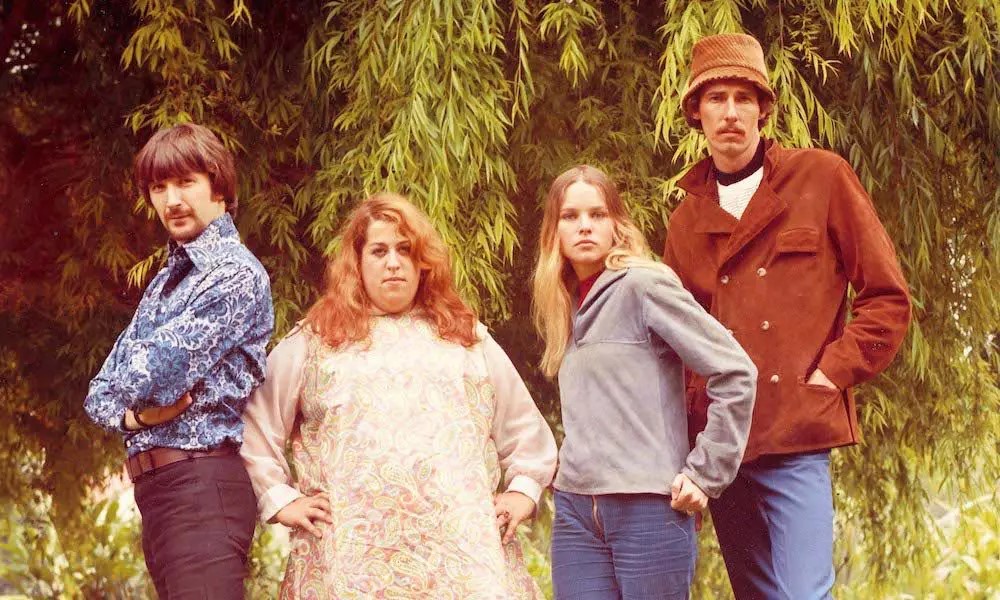 When most people think of a rock group with an internal dynamic rife with drugs and sexual jealousy, Fleetwood Mac is probably the first name that might come to mind. But a decade before Stevie Nicks, Lindsey Buckingham, Mick Fleetwood, and Christine McVie intrigued us with tales of affairs, break-ups, and betrayal, the Mamas and the Papas were doing it first.
When most people think of a rock group with an internal dynamic rife with drugs and sexual jealousy, Fleetwood Mac is probably the first name that might come to mind. But a decade before Stevie Nicks, Lindsey Buckingham, Mick Fleetwood, and Christine McVie intrigued us with tales of affairs, break-ups, and betrayal, the Mamas and the Papas were doing it first.
The four founding members of the Mamas and the Papas, John Phillips, Michelle Phillips, Denny Doherty, and Cass Elliot, had all come from folk music. Michelle and Cass were extremely interested in what the Beatles were doing and convinced the guys that rock was where the future of music lay. Between 1965 and 1968, they came out of nowhere to become major headliners, creating a string of hit singles and albums that were among the most successful and best-remembered from that era.
But there was inner turmoil from the beginning. Michelle, Cass, and Denny had all been members of a folk ensemble known as the Mugwumps. Cass had a fierce, but unrequited passion for Denny. Michelle had married fellow folkie, John Phillips, but soon after the official formation of the Mamas and the Papas, began an affair with Denny. When the illicit lovers were caught, Michelle went back to John, and Phillips and Doherty patched up their relationship. The duo even wrote a song about it (well before Fleetwood Mac’s Rumours LP) called “I Saw Her Again.”
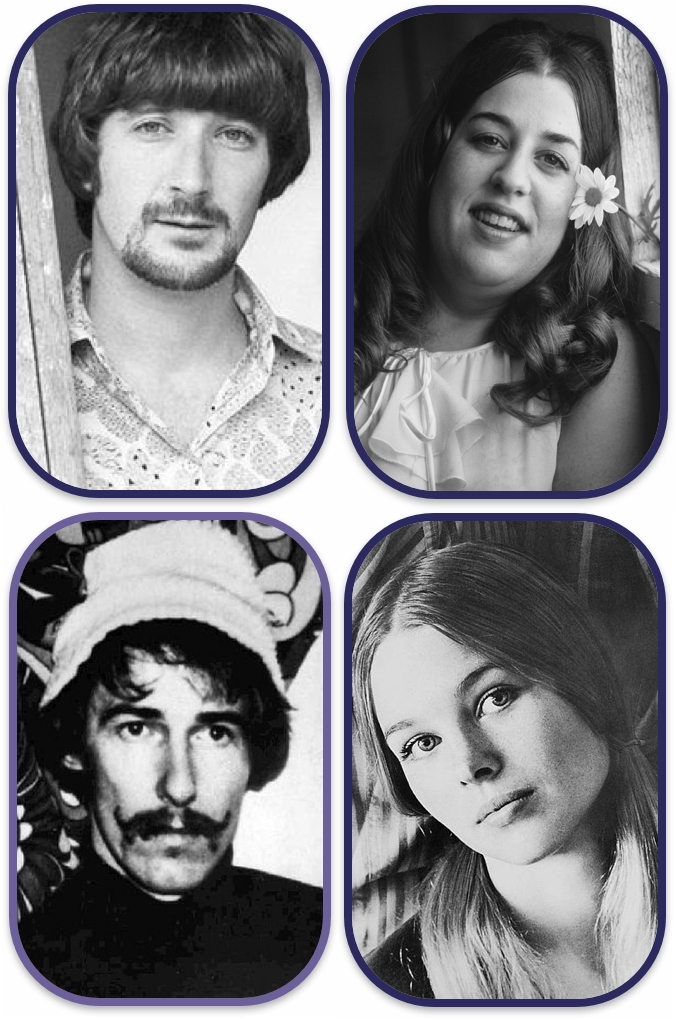 While recording their second album, Michelle was involved in a second affair. This time with Gene Clark, who was a member of the Byrds. John was not so forgiving this time. He had Michelle fired from the group in June of 1966. However, her replacement, Jill Gibson, never jelled with the rest of the group. So, less than 2 months later, Jill was out and Michelle was back in.
While recording their second album, Michelle was involved in a second affair. This time with Gene Clark, who was a member of the Byrds. John was not so forgiving this time. He had Michelle fired from the group in June of 1966. However, her replacement, Jill Gibson, never jelled with the rest of the group. So, less than 2 months later, Jill was out and Michelle was back in.
The Mamas and the Papas then started a tour. It was now that drinking and drugs (primarily on the part of John & Denny) marred their stage performances and increased tension within the band. Nevertheless, the group continued to find success in the recording studio through 1967. At the same time, John Phillips became one of the primary movers and shakers behind the legendary Monterey Pop Festival. There is some conjecture that during this period Michelle and Denny resumed their affair but Michelle cut it off again.
By 1968, Cass had had enough. She had clearly emerged as the most recognizable personality in the group and was ready to embark on a solo career. She abruptly quit the Mamas and the Papas just as they were to perform a show at the Royal Albert Hall in the UK. Not happy with this turn of events, their record label, Dunhill Records, threatened each of the members with a huge lawsuit if they didn’t get back in the studio and deliver a final album. So, the group did record The Papas and the Mamas, although most of their parts were recorded individually and then blended in post-production.
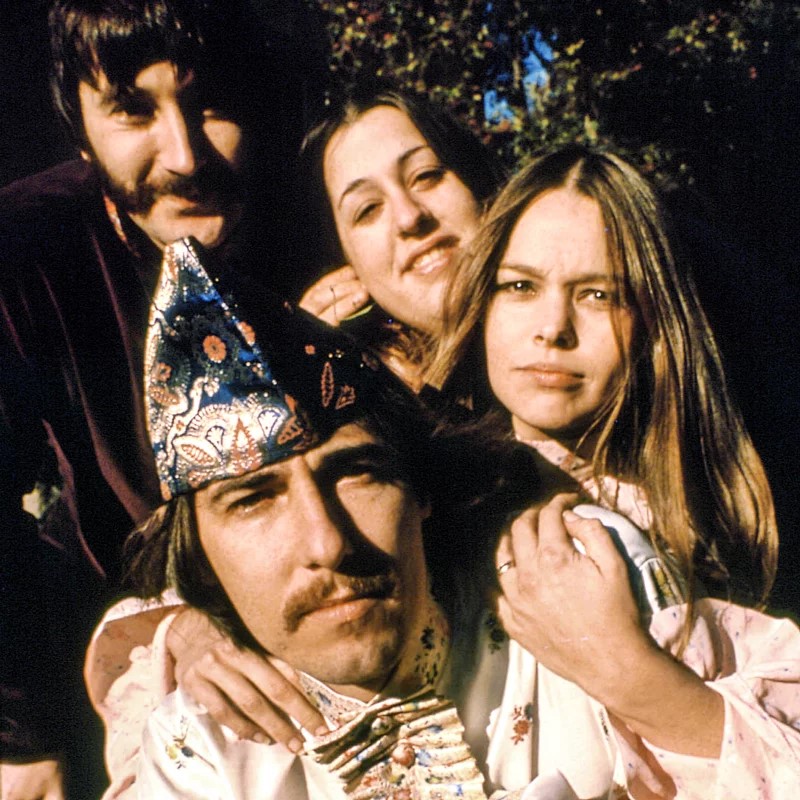 Michelle and John divorced (shocker, right?). Cass developed a mildly successful solo career until her death (by heart attack, not choking on a sandwich, okay?) in 1974. Doherty struggled with alcohol problems until finally getting sober in the early 80s. He returned to his native Canada where he had a successful career as a TV personality.
Michelle and John divorced (shocker, right?). Cass developed a mildly successful solo career until her death (by heart attack, not choking on a sandwich, okay?) in 1974. Doherty struggled with alcohol problems until finally getting sober in the early 80s. He returned to his native Canada where he had a successful career as a TV personality.
Michelle became a very successful actress, appearing in many movies and even being a part of the regular cast on the popular 80’s TV series, Knots Landing.
John Phillips spent years deep in heroin addiction and was embroiled in a further sex scandal when his daughter by his first wife, actress Mackenzie Phillips, claimed she’d had sexual relations with her father for years. Despite all of this, Phillips continued to work as a successful songwriter. One of his biggest post-Mamas & Papas hits being “Kokomo” for the Beach Boys.
Today, Michelle is the only surviving member of the continuous soap opera that was the Mamas and the Papas.
Summer at the Triple-R
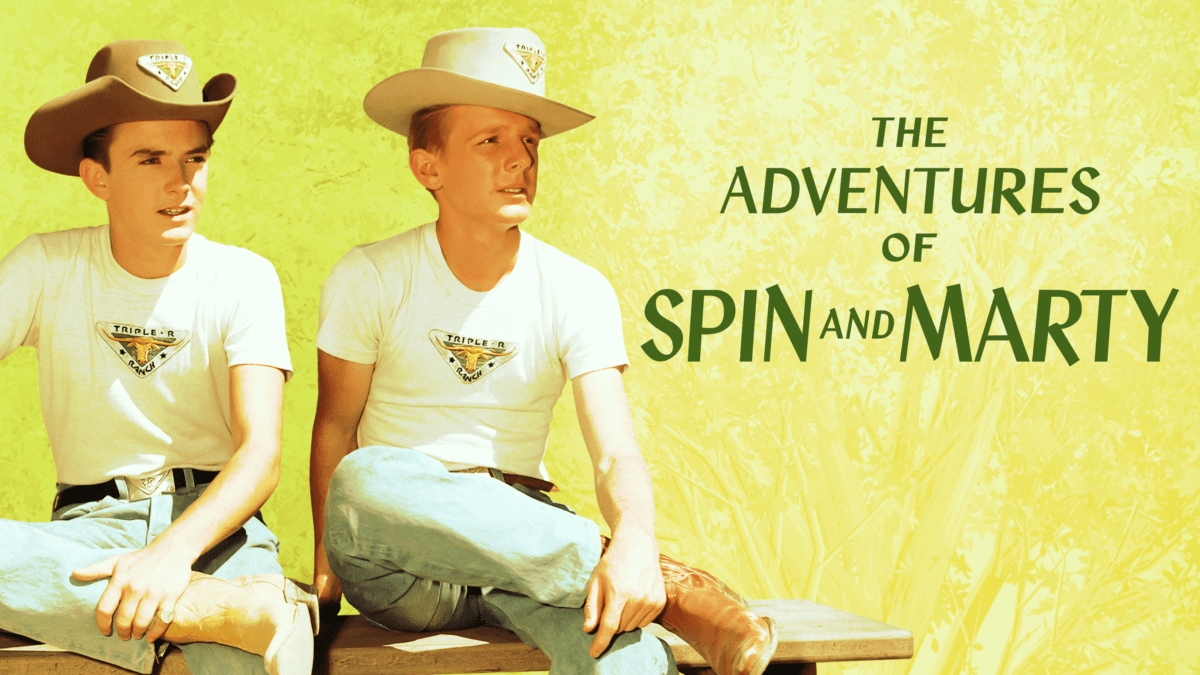
One of the biggest, most popular TV shows from the Baby Boomers' childhood was The Mickey Mouse Club. Airing after school Monday through Friday on ABC, it was “must-see TV” for our generation.
While the Mouseketeers were the main attraction, no one was prepared for the popularity of the first serial to air on that program: “The Adventures of Spin and Marty.” Debuting on Friday, November 4, 1955, the rather mild adventures of Marty Markham and Spin Evans, proved to be an instant smash, spawning two sequels, a comic book series, and plenty of other merchandise.
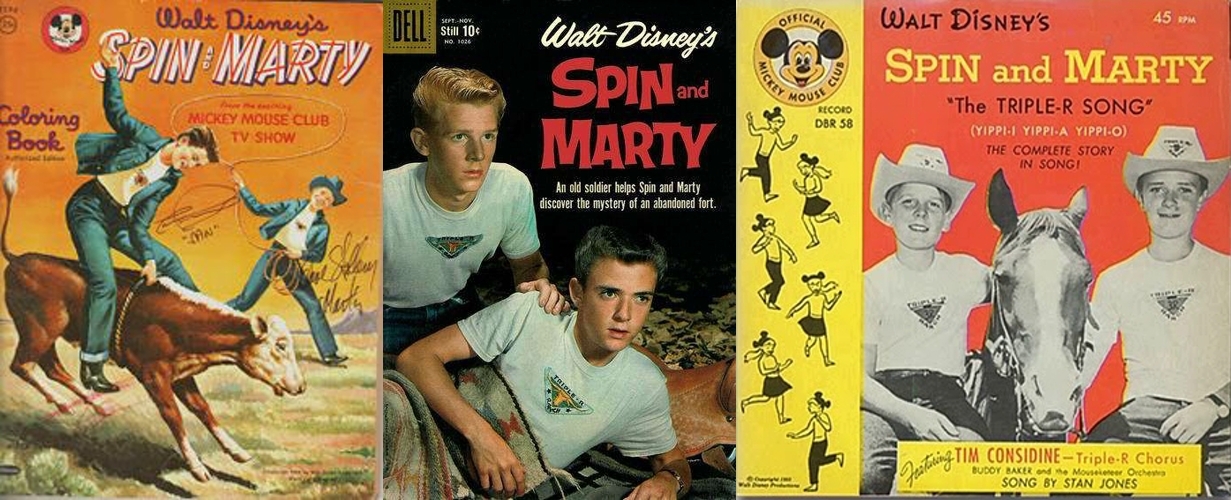
The serial was shot during the summer of 1955 before The Mickey Mouse Club debuted on ABC. They did this so the cast of mostly school-age boys could work during their summer school vacation. The location was the Golden Oak Ranch in southern California. Today that ranch is owned by the Disney Studios and has been used frequently for exterior shooting, including scenes for their long-running Pirates of the Caribbean movie franchise. “Spin & Marty’s” budget was set at $600,000 ($7.1 million in 2025 dollars) – quite pricey for something that was just one part of the hour-long Mouse Club episodes. But Walt always insisted on quality no matter the cost.
Based on the 1942 novel Martin Markham by Lawrence Edward Watkin, “The Adventures of Spin & Marty” was adapted by veteran TV writer Jackson Gillis and directed by William Beaudine.
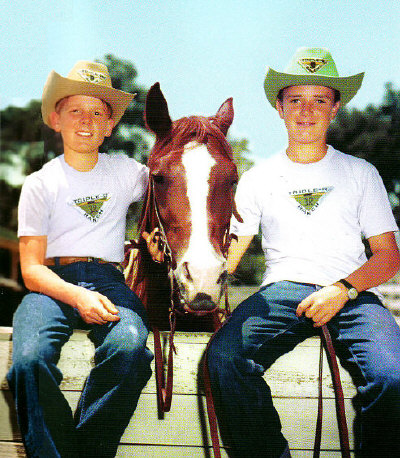 Playing Spin and Marty, respectively, were Tim Considine, who appeared in lots of Disney’s stuff as a kid before becoming one of the original siblings on My Three Sons, and David Stollery. For whatever reason, Stollery gave up acting soon after “Spin & Marty” for a career as an auto designer for Toyota. Considine passed away in 2022. Stollery is still with us.
Playing Spin and Marty, respectively, were Tim Considine, who appeared in lots of Disney’s stuff as a kid before becoming one of the original siblings on My Three Sons, and David Stollery. For whatever reason, Stollery gave up acting soon after “Spin & Marty” for a career as an auto designer for Toyota. Considine passed away in 2022. Stollery is still with us.
“The Adventures of Spin & Marty” comprised 25 episodes. The plot involved spoiled snob Marty Markham being forced to spend the summer at the Triple-R Boys’ Camp. He’s accompanied to the camp by his valet, Perkins, played by veteran British character actor J. Pat O’Malley. Of course, the main story arc has Marty slowly coming out of his shell and becoming best buds with Spin, easily the most popular kid at the Trile-R. The serial’s climax involved a rodeo with their rival, Northfork Boys’ Camp.
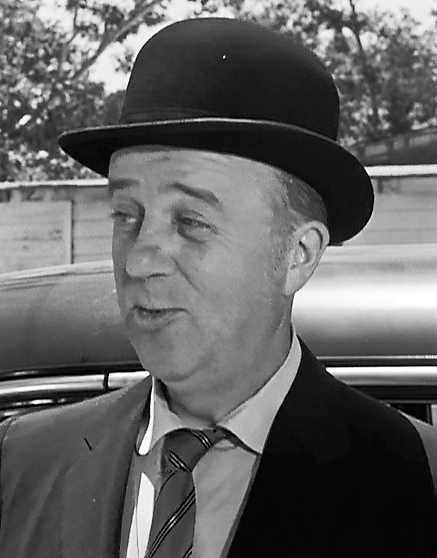 Perkins provides most of the laughs in the serial, occasionally joined by the camp’s Asian cook, Sam, portrayed by Sammee Tong, who’s most famous for playing a similar role on the long-running sitcom, Bachelor Father. Of course, there's also a crusty ranch hand named Ollie, who supplied the serials' catch phrase, “Well, I’ll be a blue-nosed gopher.”
Perkins provides most of the laughs in the serial, occasionally joined by the camp’s Asian cook, Sam, portrayed by Sammee Tong, who’s most famous for playing a similar role on the long-running sitcom, Bachelor Father. Of course, there's also a crusty ranch hand named Ollie, who supplied the serials' catch phrase, “Well, I’ll be a blue-nosed gopher.”
The Triple-R is owned by Colonel Jim Logan (Roy Barcroft), with Harry Carey, Jr. featured as the boys’ counselor, Bill Burnett. Carey grew up on a California cattle ranch and had a long career in movies, mostly in Westerns. See if you can spot him in the saloon scenes in Back to the Future III.
What made "Spin & Marty" successful wasn't the plot. That moves slowly and, even at our young age, we could tell where the plot was going. The appeal of Gillis’ script lay in correctly capturing the summer camp experience many Baby Boomers were starting to live through themselves. Plus, the kids didn’t seem like actors. They were relatable to us, like friends.
As said, the serial proved enormously popular so additional adventures showed up in each of the Mouse Club's subsequent seasons. With the second installment in 1956, “The Further Adventures of Spin and Marty,” something new was added – girls!
Annette Funicello was rapidly becoming the most popular of all the Mouseketeers, so Disney put her in this sequel, playing a young lady named – wait for it- Annette! (She wasn’t the first Mouseketeer to star in a serial – Darlene Gillespie had starred as Corky in “Corky & White Shadow” a year earlier. But "Corky" didn’t generate anything like the fan response to “Spin & Marty”).
The plot of this return to the Triple-R finds the lads hosting a dance for the girls’ camp across the lake, the Circle-H. Both Spin & Marty develop crushes on Annette, who looks very fetching in her bathing cap. And this year, instead of a rodeo, we have a climatic swim meet against the Northfork boys.
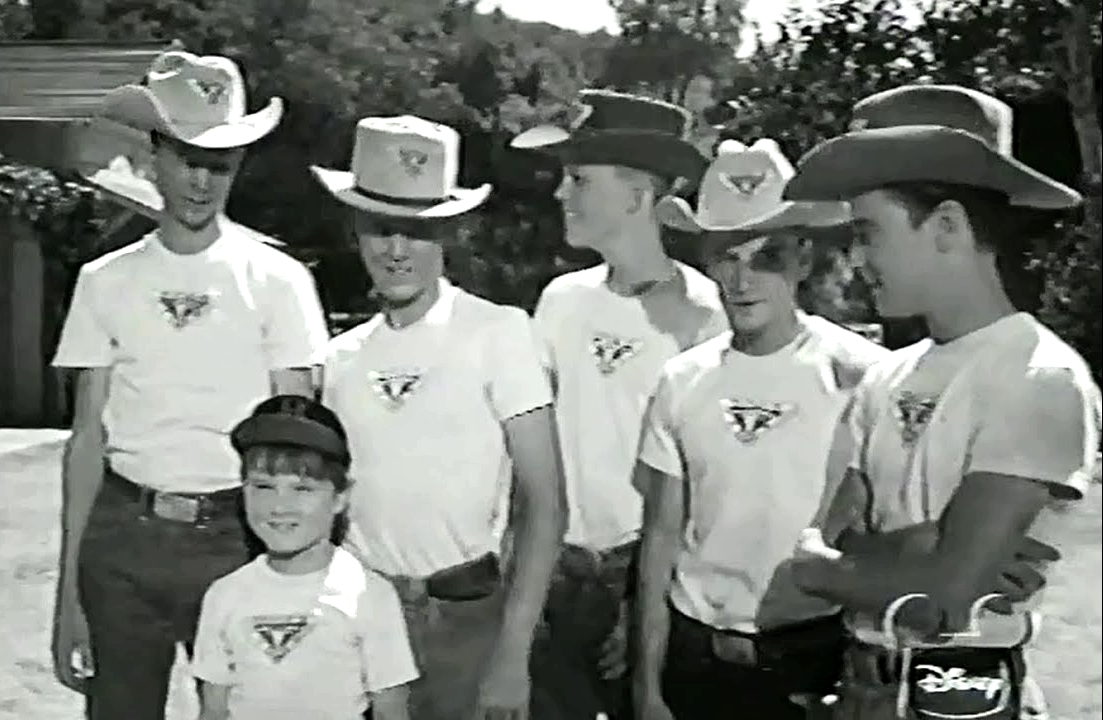 All the regulars from the first summer are back, plus we get a new kid at camp, one who would go on to become a Disney legend. Seven-year-old Kevin Cocoran appears as Moochie, a nickname that would stick with the young actor no matter what other parts he played. He probably had the second most successful career of any of the Mouse Club gang outside of Annette.
All the regulars from the first summer are back, plus we get a new kid at camp, one who would go on to become a Disney legend. Seven-year-old Kevin Cocoran appears as Moochie, a nickname that would stick with the young actor no matter what other parts he played. He probably had the second most successful career of any of the Mouse Club gang outside of Annette.
“The Further Adventures” ran 23 episodes. It was followed a year later by “The New Adventures of Spin & Marty.” This time the girls have an even bigger part with Darlene joining the cast. The third summer revolves around capturing and taming a wild stallion and then morphs into a “let’s put on a show” plot, like those old Mickey Rooney – Judy Garland films of the 1930s. Knowing what a hit “Spin & Marty” was, Disney had this final serial stretch out over 30 episodes.
The continuing popularity of Spin & Marty led to lots of merchandise: cowboy hats, t-shirts, coloring books, records, and a comic book series that actually lasted until 1962.
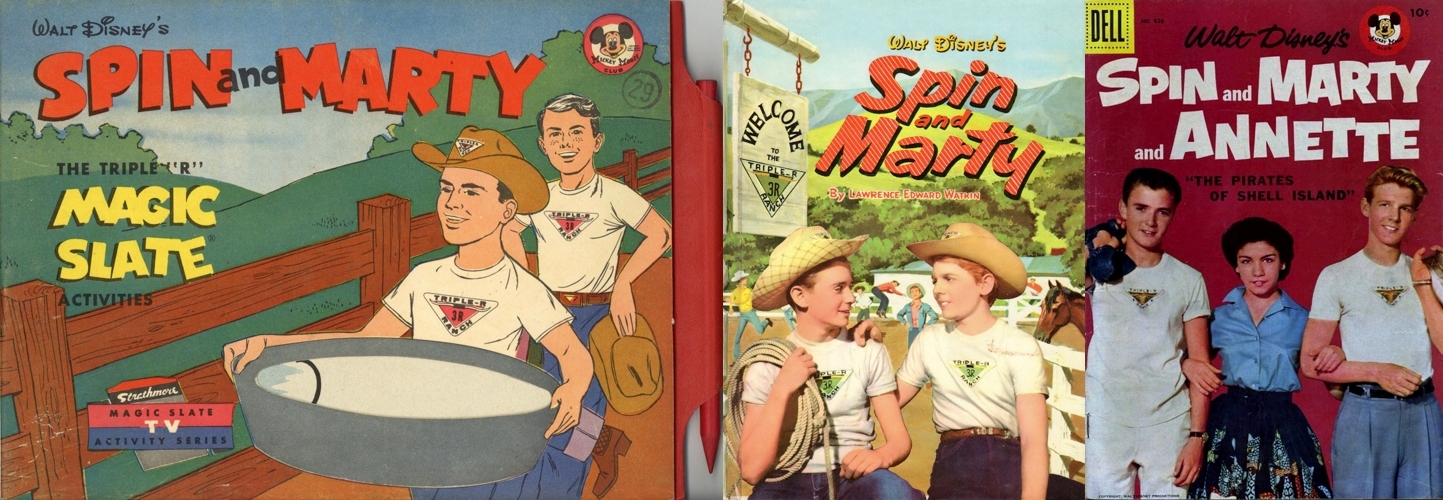
The first serial was released on DVD in 2005. You can find it on eBay still at an affordable price. All 3 serials have also been shown on Disney’s original cable channel, but only the first has shown up on its streaming service.
No matter how old we get, there’s something to be said for spending a few weeks of the summer at the good ol’ Triple-R, where the horses are the best by far. Yippie-yay, yippie-yo!
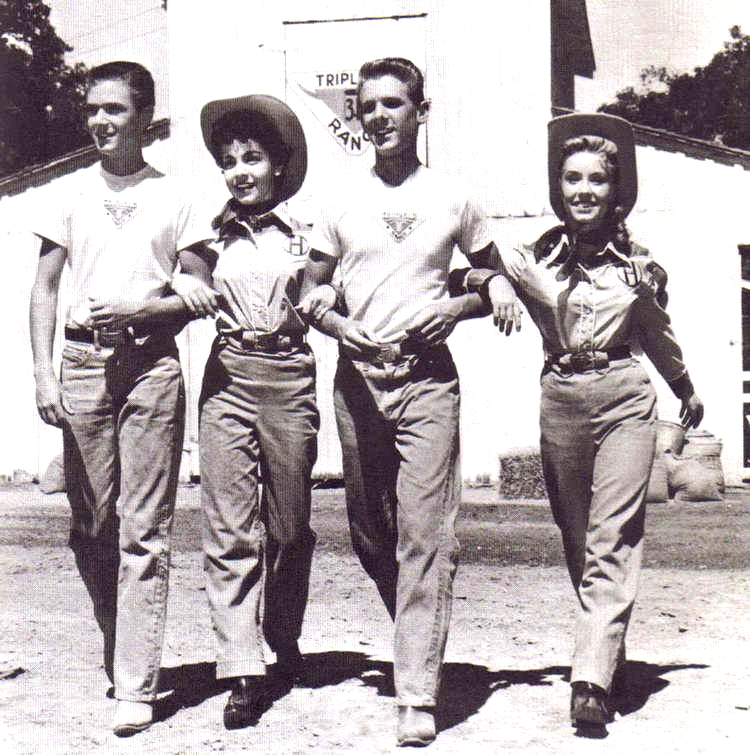
Fighting Inflation Fears
 One of the most common fears among Baby Boomers these days is thinking they may run out of money before they run out of life. The post-COVID inflation spike only made those fears worse.
One of the most common fears among Baby Boomers these days is thinking they may run out of money before they run out of life. The post-COVID inflation spike only made those fears worse.
We have some news that may calm your fears. Economists feel that the worst of the inflation is behind us. As prices for groceries and housing shot up, there is now no pressure on them to go higher. In fact, several large chains such as Wal-Mart and Target have announced that they are looking to roll back prices on some grocery items (an indirect admission that price hikes may have been spurred more by corporate greed than the usual supply/demand issues).
Plus, Social Security cost of living adjustments will keep those benefits rising year-to-year.
Experts also suggest that you look to invest a portion of your retirement savings in the stock market, which is doing extremely well. Other financial instruments like certificates of deposit, which can tie up your funds for a shorter term, are also paying a better rate of return thanks to higher interest rates,
Now would be a good time to discuss new strategies with your financial advisor. If you don’t have a financial advisor, now would also be a good time to get one.
On Beyond ABBA
 For those who can’t get enough of the Swedish supergroup, we may have good news for you.
For those who can’t get enough of the Swedish supergroup, we may have good news for you.
Just three years ago, ABBA surprised everyone by releasing their first album of new material in forty years (Voyager). Their holograms are also playing shows in a specially built theater in the UK. Sadly, there are no further announced projects featuring the four original members, but there have been a number of albums that come close to capturing the ABBA sound.
That’s because Benny Andersson, one of the B’s in ABBA, formed another group called Benny Anderssons Orkester (possessives in Swedish do not use apostrophes). This group has, so far, released six studio albums, a Christmas album, a live album, and two compilation albums.
 What sets the group (also known as BAO) apart from most other recording and performing acts is the really eclectic blend of genres they embrace. Each album combines traditional Swedish folk music with classical, pop, and jazz influences. Most of the tracks are pure instrumentals with the occasional vocals being provided by Helen Sjöholm and Tommy Körberg, two performers well-known in Sweden.
What sets the group (also known as BAO) apart from most other recording and performing acts is the really eclectic blend of genres they embrace. Each album combines traditional Swedish folk music with classical, pop, and jazz influences. Most of the tracks are pure instrumentals with the occasional vocals being provided by Helen Sjöholm and Tommy Körberg, two performers well-known in Sweden.
While Benny writes all of the original music for the group when they do need lyrics, more often than not, those are provided by the other B in ABBA, Björn Ulvaeus.
BAO has been very successful in their native country. Each of their albums has landed in that country’s top 10, three reaching #1, Their single, "Du Är Min Man" (“You Are My Man”), was featured on the Swedish weekly radio charts for an astounding 258 weeks (spending 65 of those weeks at #1). The group has also toured Sweden where Benny insists that a dance floor be provided in the audience so concertgoers can dance as well as listen.
The group has released one album aimed primarily at an English-speaking audience. Story of a Heart came out in 2009. Released under the name Benny Andersson Band, it charted in both the UK and Norway. The album is a mix of previously released tracks (instrumentals needing no translation) and English-language versions of some of their more popular songs.
 So, if you’re still looking for more ABBA-flavored pop, be advised that each album contains tunes well outside the boundaries of conventional pop and rock. But the most ABBA-like tunes in the BAO catalog include (the first four all feature English lyrics):
So, if you’re still looking for more ABBA-flavored pop, be advised that each album contains tunes well outside the boundaries of conventional pop and rock. But the most ABBA-like tunes in the BAO catalog include (the first four all feature English lyrics):
“Story of a Heart”
"Fait Accompli"
“Crush on You”
“You Are My Man” (Re-recording of "Du Är Min Man" with English lyrics)
“Bara, Bara Du” (“Only, Only You”)
“En Dag i Sänder” (“One Day at a Time”)
“Hem Till Mamma” (“Home to Mamma”)
Much Ado About (Almost) Nothing
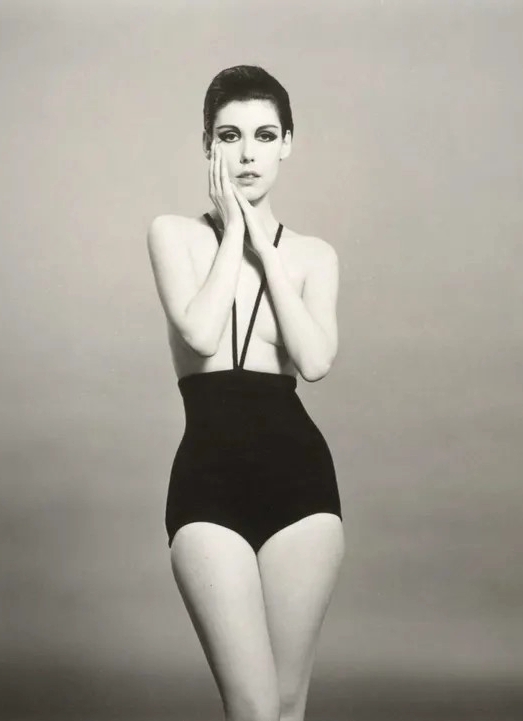 Much has been written about the “sexual revolution” of the 1960s, when America seemed to be moving past the puritanical 50s. The introduction of the birth control pill was perhaps the biggest event in that battle, but almost as important was the introduction of a little thing called the “topless bathing suit” in 1964.
Much has been written about the “sexual revolution” of the 1960s, when America seemed to be moving past the puritanical 50s. The introduction of the birth control pill was perhaps the biggest event in that battle, but almost as important was the introduction of a little thing called the “topless bathing suit” in 1964.
The suit was designed by Austrian-American designer Rudi Gernreich. Look Magazine was planning a feature on futuristic ideas and asked Rudi to submit what he thought the future held for women’s bathing suits. With the bikini already firmly established on the beaches of America, Gernreich knew he had to go farther, so he designed what he first called the monokini. He was playing off the “bi” part of bikini although that design had been named after an atoll in the Pacific Ocean with the “bi” having nothing to do with “two.” It didn’t matter. The press ignored Rudi’s name and promptly dubbed it what it was: the topless swimsuit.
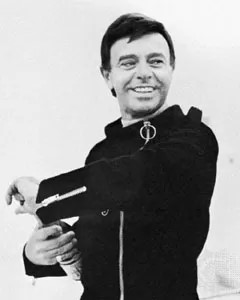 Gernreich could find no professional model willing to wear it for the Look photoshoot. So, Rudi recruited a personal friend and model Peggy Moffitt to wear it. She agreed, but only if the photos were taken by her husband in a private setting. A shot of Peggy, bare-breasted, appeared first in Women’s Wear Daily.
Gernreich could find no professional model willing to wear it for the Look photoshoot. So, Rudi recruited a personal friend and model Peggy Moffitt to wear it. She agreed, but only if the photos were taken by her husband in a private setting. A shot of Peggy, bare-breasted, appeared first in Women’s Wear Daily.
Look didn’t want bare breasts in what was a family magazine, so they used a rear view of the suit modeled by someone else. When Life Magazine wanted to run a photo of it, Peggy posed again, this time with her arms more discreetly placed across her chest. (That's the photo you see here at the top of the post.)
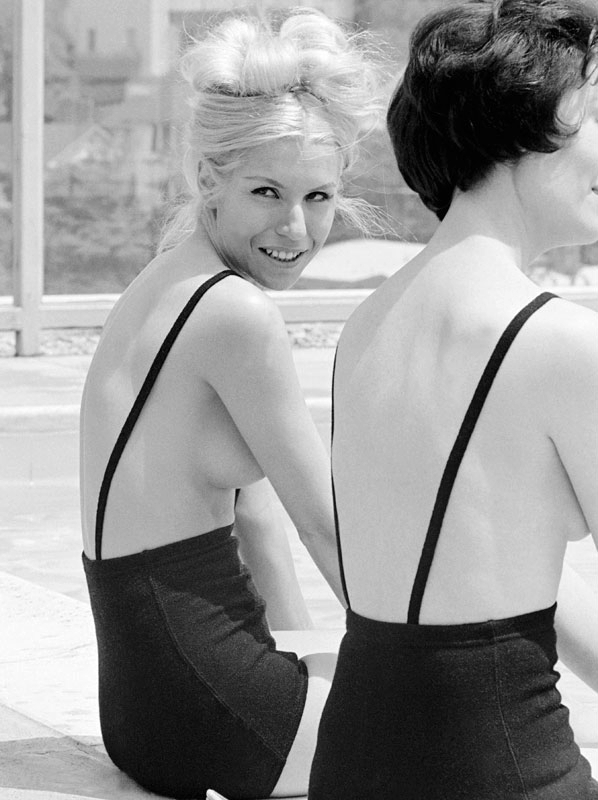 Gernreich had intended the suit to be a prediction of things to come and initially had not put his monokini into production. But orders for the suit began to pour in. Bowing to demand, Gernreich eventually produced 3,000 units of his knitted suit in several different colors, selling for $24. Just who these suits were sold to and where they were worn is something of a mystery. A few surviving photos show that maybe some made their appearance at private pool parties.
Gernreich had intended the suit to be a prediction of things to come and initially had not put his monokini into production. But orders for the suit began to pour in. Bowing to demand, Gernreich eventually produced 3,000 units of his knitted suit in several different colors, selling for $24. Just who these suits were sold to and where they were worn is something of a mystery. A few surviving photos show that maybe some made their appearance at private pool parties.
Only two attempts to wear the suit on a public beach are recorded. One was by exotic dancer Carol Doda in San Francisco, mainly to publicize her appearance at the area’s first “topless nightclub.” The second was worn by model Toni Lee Shelley on a Chicago beach. She was arrested.
 Exactly how the suits were sold is also a bit murky. One store in Dallas tried displaying the suit on a mannequin, but public protests caused them to pull it from the window. In Milwaukee, a local women’s dress shop had one in their front window, but the cops made them turn the mannequin around, so only the back could be seen.
Exactly how the suits were sold is also a bit murky. One store in Dallas tried displaying the suit on a mannequin, but public protests caused them to pull it from the window. In Milwaukee, a local women’s dress shop had one in their front window, but the cops made them turn the mannequin around, so only the back could be seen.
Gernreich hoped the suit would remove the sexual connotation attributed to women’s breasts. In that, he failed completely. But in advancing the sexual revolution, adding the word “topless” to our sexual lexicon, and encouraging more revealing clothing for women (the thong-bottom swimsuit would arrive 25 years later), he was a smashing success!
Do the Stomp – It’s Good for Your Bones
 As we age, our bones lose some of their density. But there are some exercises that can help your bones maintain their health.
As we age, our bones lose some of their density. But there are some exercises that can help your bones maintain their health.
If running isn’t the right fit for you, experts say go for a walk and stomp your foot 2 or 3 times every 10 steps (alternating feet, naturally).Pretend like you're trying to crush an empty soda can. That can actually help stimulate and protect your bones.
BTW – walking on real ground rather than a treadmill is also better for your legs.
The TV That Time Forgot: Gidget
 While it only lasted one season (1965-66), Gidget has never really faded from public consciousness. There are several reasons for this.
While it only lasted one season (1965-66), Gidget has never really faded from public consciousness. There are several reasons for this.
1.) The character of Gidget became a cultural icon thanks to multiple movie and TV projects. Prior to the TV series, Gidget had been the title character in 3 movies as well as the original 1957 novel that gave birth to the character.
2.) Sally Field overcame a couple of silly sitcoms (Flying Nun, anyone?) to emerge as one of our generation's most respected actors, earning three Emmies and two Oscars. That Gidget was her first starring role meant it was often mentioned when anyone discussed her career.
3.) The series is actually pretty good.
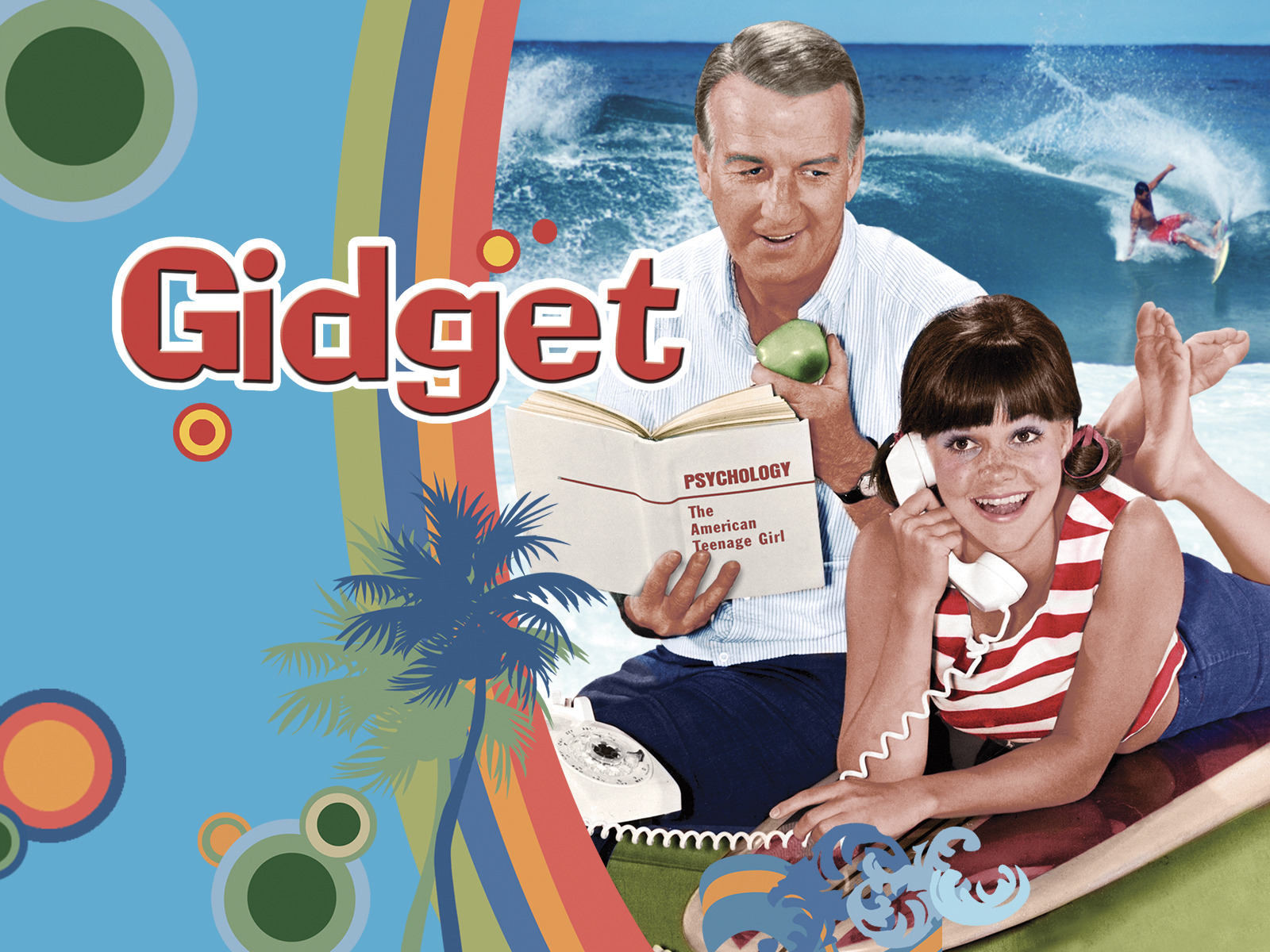 As you may know from reading one of our other posts, there really is a Gidget. She’s Kathy Kohner, who became one of the few female surfers in the early days of the sport. Her dad, Frederick Kohner, wrote a fictionalized account of her teen years that, in turn, became the basis for three very successful films, Gidget (1959), Gidget Goes Hawaiian (1961), and Gidget Goes to Rome (1963).
As you may know from reading one of our other posts, there really is a Gidget. She’s Kathy Kohner, who became one of the few female surfers in the early days of the sport. Her dad, Frederick Kohner, wrote a fictionalized account of her teen years that, in turn, became the basis for three very successful films, Gidget (1959), Gidget Goes Hawaiian (1961), and Gidget Goes to Rome (1963).
In adapting her exploits for the small screen, producers employed the senior Kohner as the script consultant (he actually contributed several stories during the show’s only season). They cast Don Porter, who had played Gidget’s father in the last of the films. They also brought back three characters that were in the novel, but cut from the movies: Gidget’s best friend, Larue, her older sister Anne, and her brother-in-law John, a know-it-all psychologist who was constantly psychoanalyzing Gidget’s behavior.

One of the endearing features of the show is that Gidget breaks the fourth wall and directly addresses the audience about how she feels after certain scenes. For the young guys watching the show, she also spends quite a bit of time in two-piece swimsuits and baby doll pajamas.
While the show featured quite a few beach scenes and plenty of surfing footage, Gidget’s boyfriend Moondoggie is sent off to college in the pilot episode, freeing up Gidget for plenty of romantic escapades throughout the run of the series. The core of the series is really the daddy-daughter relationship between Gidget and her single dad (Professor Lawrence is widowed in the TV series).
 Her annoying brother-in-law was played by an actor named Peter Duel, who went on to other TV series like Love on a Rooftop and Alias Smith and Jones. Among the actors who showed up for bits parts during that single season were Judy Carne (who became Duel’s co-star in Love on a Rooftop), Richard Dreyfuss, Bonnie Franklin, and Barbara Hershey – the latter two showing up in multiple episodes as classmates of Gidget.
Her annoying brother-in-law was played by an actor named Peter Duel, who went on to other TV series like Love on a Rooftop and Alias Smith and Jones. Among the actors who showed up for bits parts during that single season were Judy Carne (who became Duel’s co-star in Love on a Rooftop), Richard Dreyfuss, Bonnie Franklin, and Barbara Hershey – the latter two showing up in multiple episodes as classmates of Gidget.
While Field was 19 at the time of filming, her character is only supposed to be 15. That makes her romance with the college-aged Moondoggie somewhat creepy. In other episodes, she gets involved with other adult men, which concerns her father somewhat, but not like how that subject would be handled today.
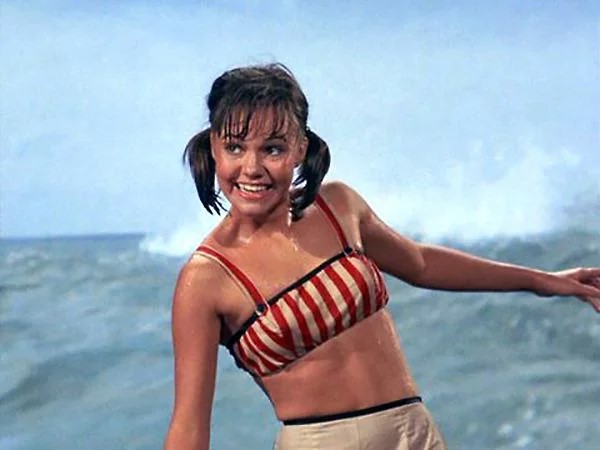 Whle the show experienced low ratings during the regular season and was cancelled, it actually scored very good ratings during the summer reruns. Instead of reversing their decision and going forward with a second season, ABC in their infinite wisdom decided to create a whole new sitcom for their budding star - the aforementioned Flying Nun.
Whle the show experienced low ratings during the regular season and was cancelled, it actually scored very good ratings during the summer reruns. Instead of reversing their decision and going forward with a second season, ABC in their infinite wisdom decided to create a whole new sitcom for their budding star - the aforementioned Flying Nun.
BTW – Gidget’s signature expression, “Toodles,” was originally ad-libbed by Sally. The producers liked it, so it became her standard farewell expression.
Because of Field’s subsequent fame, the series has actually been rerun on TV many times and is available on home video. Gidget, the character, went on to a made-for-TV movie, Gidget Grows Up (1969 – with Karen Valentine), and a series reboot, The New Gidget in 1986, featuring a grown-up Gidget, Moondoggie, and Larue. It lasted two seasons.

Getting the Best Deals on Groceries
 Groceries cost more these days. That’s hardly a “stop the presses” moment. But there are still ways you can reduce the weekly food bill.
Groceries cost more these days. That’s hardly a “stop the presses” moment. But there are still ways you can reduce the weekly food bill.
BOGO: If there are items you normally buy and you know these items will sometimes figure in a store’s “buy one - get one” specials, consider buying more than you immediately need (if the item is non-perishable). That way, you’ll be enjoying a 50% discount over a longer period of time.
UNIT PRICING: Look closely at those little shelf tags. They not only contain the package price. They will also contain a per ounce/pound/quart price. That price will almost always be in very small type, so make sure you bring along your reading glasses if you need help with small print. By comparing items using the per unit price, you can find out which item is really the more economical buy. You’ll be surprised. Sometimes the larger package or bottle is actually more expensive per ounce than a small package or bottle.
BAGS OF PRODUCE: Many grocery stores offer pre-bagged produce, like potatoes. They can be cheaper than buying the same produce loose. Just be sure you can inspect what’s in the bag, making sure they haven’t disguised any bruised or sub-standard produce inside the bag.
CONVENIENCE COSTS: Many products like ketchup, mayonnaise, dish detergent, etc., come in bulk packaging and packaging with a built-in dispenser for ease of use. In nearly all cases, those “convenient” packages will cost you more.
We shouldn’t need to mention that coupons can also cut down your food bill. Many stores will have coupons available in the front of the store or in what are known as “shelf-talkers,” gadgets that dispense the coupon right on the shelf where the product is available.
A Great “Whey” to Get More Protein
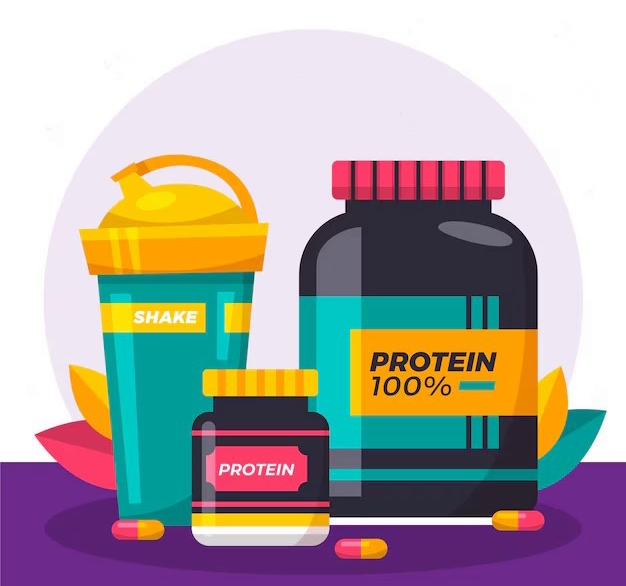 As we age, our bodies have a harder time turning protein into muscle. It’s one reason why experts recommend that increase our intake of protein as we get older.
As we age, our bodies have a harder time turning protein into muscle. It’s one reason why experts recommend that increase our intake of protein as we get older.
But how do we do that without increasing our intake of calories?
The best way, according to these experts, is to use whey powder. As you may remember from “Little Miss Muffet,” whey is one of the components of milk and it is extracted and sold as whey powder. Studies indicate that powder is more beneficial than either pre-packaged protein drinks and bars. That’s because the drinks and bars have more additives, like sugar, that could do more harm than good.
There are two kinds of powder: concentrate and isolate. Isolate powder has been stripped of milk’s lactose and fat, so it has fewer calories and is also suited to those who are lactose-intolerant. If you choose an unflavored powder, it can be added to lots of things: milk, soup, yogurt, pancake mix, cookie dough, even mashed potatoes, or scrambled eggs.
One final tip from the pros: make sure you use the protein powder to supplement and not replace meals.
Pop Up Player
Latest Posts–Financial Info
-
Quick Ways to Score Extra Cash
Even in today’s economy, everybody is looking for ways to expand their income. We have three ways that might do the trick. Cash in Your Gift Cards – Have unused gift cards? You can sell…
-
Fast & Free Will
Did you know a will dosn't have to be a long, complicated process? And you defintely should have one! Dying without one can leave your estate in chaos. The internet comes to rescure again. You…
-
Making Home Renovations Pay
Fixing up your home? You might want to tell your insurance company about it. 8 of the 10 largest home insurers offer little-publicized discounts for certain renovations or upgrades. Go to BankRate.com and type in…
-
Why Use Credit Cards, Not Debit Cards
Because credit cards give you more protection should your card number be stolen. Most credit card companies have a limit on how much your account may be charged in the event of false charges. In…
-
Before You Rent a Self-Storage Unit
The rapid growth of self-storage facilities across the United States is a testimony to Americans having more stuff than they know what to do with. Before you rent a unit for your excess stuff,read this:…
-
Older Workers Wanted!
Ever been worried you might lose your job because you were getting too old? Relax. Many employers are now looking specifically at hiring and retaining workers over the age of 60. Why? Because of their…


